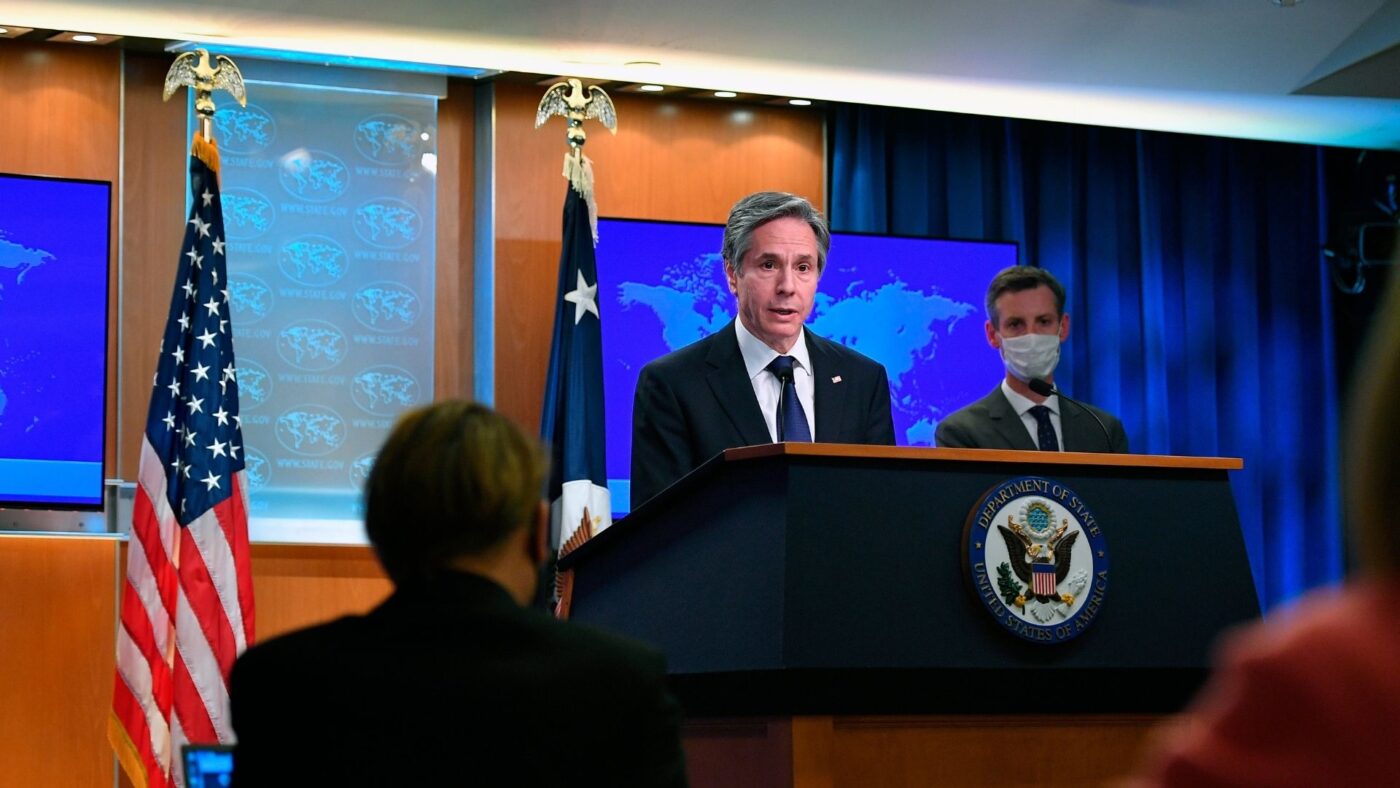The annual Country Reports on Human Rights Practices cover internationally recognized individual, civil, political and worker rights.
December 2021

Introducing the 2020 Country Reports on Human Rights Practices, U.S. Secretary of State Antony J. Blinken notes the value of the reports as a tool in informing U.S. policy on human rights, “By documenting the status of human rights each year, the U.S. Department of State provides objective and comprehensive information to the U.S. Congress, civil society, academics, activists and people everywhere – all of whom have roles to play in promoting human rights and accountability for rights abuses and violations.”
The annual Country Reports on Human Rights Practices are the U.S. government account of human rights conditions in countries around the globe. The reports summarize each country’s compliance with internationally recognized individual, civil, political and worker rights as delineated in the Universal Declaration of Human Rights, adopted by the United Nations General Assembly in 1948.
The Country Reports were initiated through legislative amendments to the 1961 Foreign Assistance Act (FAA) signed by U.S. President John F. Kennedy. The first Country Reports were published in 1978 covering 105 countries of the world for the year 1977. Congress aimed to make human rights a priority in U.S. foreign policy with legislation in 1974 to withhold U.S. security assistance from governments that engage in “a consistent pattern of gross violations of international human rights.” The following year a FAA amendment required the Secretary of State to submit to a full and complete report of human rights conditions of recipient countries to Congress each year. In 1979, another FAA amendment extended reporting coverage for all United Nations member states.
The country reports have consistently served as a resource for Congress in response to national priorities and global realities with implications for U.S. foreign policy, foreign assistance, bilateral and multilateral engagement as well as economic sanctions. According to the Congressional Research Service (CRS), the early country reports, “were criticized for being biased and thin on substance. Over time with ongoing improvements in the breadth, quality and accuracy of the reports experts have come to recognize them as authoritative.”
The State Department Bureau of Democracy, Human Rights and Labor (DRL) is tasked with coordinating the drafting and publishing of the reports every year, in keeping with their overall mission to promote democracy, protect human rights, religious freedom, and advance labor rights globally. Meanwhile, Congress has continually extended, strengthened and increased the human rights categories reported on to reflect worldwide ongoing challenges to human rights.
The Country Reports do not compare countries or rank them based on the severity of human rights abuses documented. Information for the Country Reports is obtained from a wide array of credible sources including U.S. embassies and consulates abroad, foreign government officials, nongovernmental organizations (NGOs), intergovernmental and international organizations, jurists and legal experts, journalists, academics, labor activists and victims of alleged human rights abuses.
Over time the reports have evolved into thorough, detailed narratives of each country’s human rights practices. A total of 444 pages comprised the first Country Reports while the 2020 Country Reports chronicle human rights practices in 207 countries, with reports ranging from 10-50 pages per country.
Early Country Reports contained only four sections. Original categories included a section reporting the level of respect for the: Integrity of the Person, considered to be born free and equal before the law and innocent until proven guilty with rights to a fair public trial.
Another section on Government Policies on Vital Needs reported on the status of Food, Shelter, Healthcare and Education for citizens.
The section for Civil and Political Liberties covered freedom of speech, assembly, and movement as well as participation in the political process.
And a final section summarized the Government Attitude Regarding Alleged Violations of Human Rights for each country.
The scope of the reports has broadened as Congress amended legislation to add or expand human rights topics in response to evolving situations and contexts. Modern U.S. Country Reports include additional sections covering Corruption and Transparency in Government; Discrimination and Societal Abuses; and Workers Rights.
Current categories now include societal abuses of worker rights as well as human rights based on sexual orientation, gender identity or disability. Also referenced in the country reports are congressionally required annual reports on international religious freedom (IRF) and trafficking in persons (TIP) both of which feature mechanisms to identify and penalize problematic governments.
Despite their legislative origin in connection with U.S. foreign assistance, today’s country reports generally serve as a congressional resource for U.S. policy rather than a direct instrument for restricting aid.
The precise role that the reports should play in U.S. policy has been the subject of continued debate. Congress plays a key role in these debates, often pressuring the executive branch to place greater emphasis on human rights when formulating foreign policy.
For more information, please click here
Hillary Hoppock is a freelance writer, former newspaper publisher and reporter based in Orinda, California.
COMMENTS